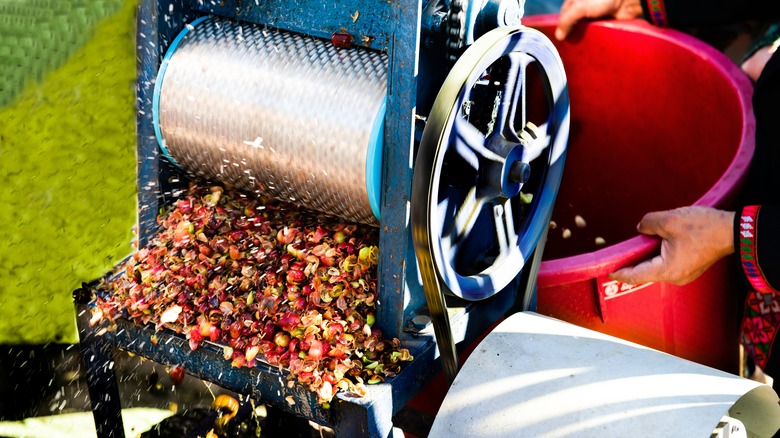How The Washed Coffee Process Impacts The Taste Of Your Brew
How often do we put in the effort to understand the way our favorite coffee is processed? Do we check if it is Fair Trade Certified? Do we bother to look up the country of origin? Are we drinking arabica or robusta? For those among us who take coffee far more seriously than the average buyer, the answer is probably yes. However, among the serious coffee drinkers are the super serious coffee drinkers, known as coffee nuts. These are the people who can tell you what side of the mountain the coffee beans were grown on or what the weather was like on the day they were harvested. Okay, that's an exaggeration. Still, it is important to understand where your coffee is coming from and how it is processed because, as Trade explains, a lot goes into making your coffee taste the way it does.
There are several types of coffee processing, but two of the most common are natural and washed. The natural process occurs much like you would think — the coffee cherries are picked from the tree and left to dry out in the open air with the skin still on. They are not de-pulped before drying. Natural processed coffee tends to be on the fruitier, more fermented side, as the inner bean has had time to interact with the sugars of its outer shell, per Backyard Beans. The washed process is completely different and, as a result, lends a noticeably different flavor profile to the final brew.
A different process creates a different flavor
The washed coffee process is gone over in great detail by Café Imports on YouTube. At its core, the washed process was developed as a way to quicken the preparation of harvesting coffee beans, without sacrificing anything in terms of quality. Washing is a favored method among smaller producers for its efficiency and scalability. The coffee cherries are collected as normal, though instead of immediately laying them out to ferment and dry, the cherries are submerged in water. Any that float are considered inferior and discarded. The pulp is then removed either manually or with a machine. By pre-soaking the cherries in water the pulp is allowed to loosen and break free from the seed within.
Once the seeds are de-pulped, they are agitated in the water again to remove the mucilage, which is the sticky, mucus-like membrane that coats the seeds. Once the mucilage is washed away, only the silverskin and the seed remain. The seeds are then spread out and left to dry, per Perfect Daily Grind. Coffee makers claim that the washed process brings out the more natural flavors of the coffee bean. With the mucilage removed, washed coffee has an altogether fresher, cleaner taste, with less acidity and more brightness. Some examples of washed coffees include well-balanced Colombians and floral Ethiopians (via Trade)

